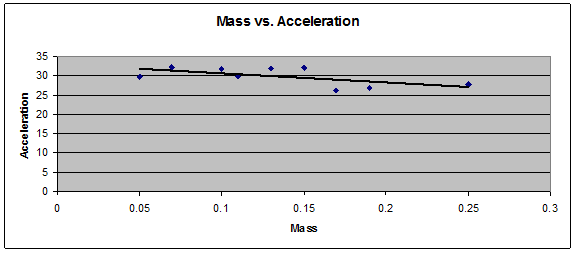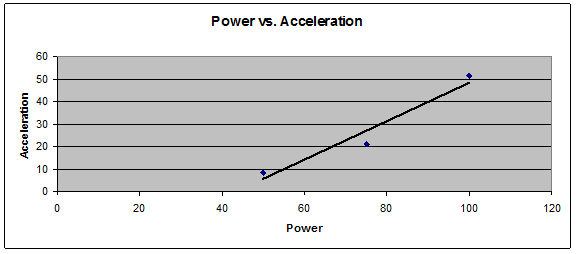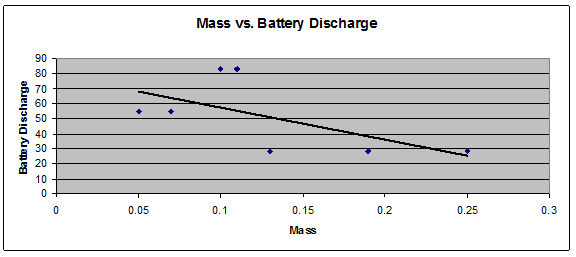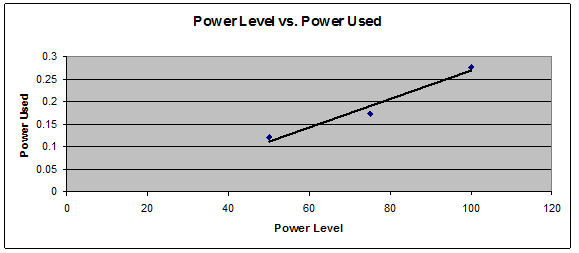In class, we tested how adding and subtracting weights would make a difference in the amount of power that was used by the engines of the NXT robots to demonstrate several principles of energy usage and physics. Below are the results.

The first test was to show the relationship between mass, the total weight of the object being moved, and how it affects the amount of acceleration, or the increase in speed of the object as it travels. The higher the mass you are trying to move, the slower the acceleration will be since it takes more energy to move the object the same distance against the force of gravity, while the less mass you have will make the acceleration faster because it has an easier time fighting gravity.

The next test was the power versus the acceleration. Power is defined as the amount of work done over the amount of time it takes to accomplish the defined task, in this case measured in power level of the motor, which were 50%, 75% and 100% in each trial. An increase in the power of the motor dramatically increases the amount of acceleration, even when done for the same amount of mass each time, in this case, .25kg. The more power, the more acceleration, because more energy is being put into moving the same amount of mass.

The next test was to measure the amount of energy discharged by the battery versus the mass being moved. Despite some outliers in our data, which were possibly caused by problems with the equipment, the opposite seems to be true of the mass versus the total energy discharge of the battery, where the more mass you have means that the battery puts out less energy to move it. This does not make sense when you look at the physics of it, where it takes more energy to move more mass, so it’s best to discard the data from this test as faulty.

The last test was the amount of power used by the engine versus the power level with a consistent mass of .25kg, and again the relationship is positively correlated. The higher the power level of the motor the more power is used, because the engine is being told it needs to do more work even if the mass remains the same.
These tests shows that it takes more energy to move larger masses, and that acceleration is inversely tied to mass, and the higher the power level the higher the amount of energy consumed. With the exception of the one faulty test this data is in line with the laws of physics and explains why our greatly increased use of energy over the past century has increased our global energy demands, since we want to do more at the same time, and without energy saving technologies and new ways of creating energy we will very quickly deplete our supply.
Good job in explaining your results.